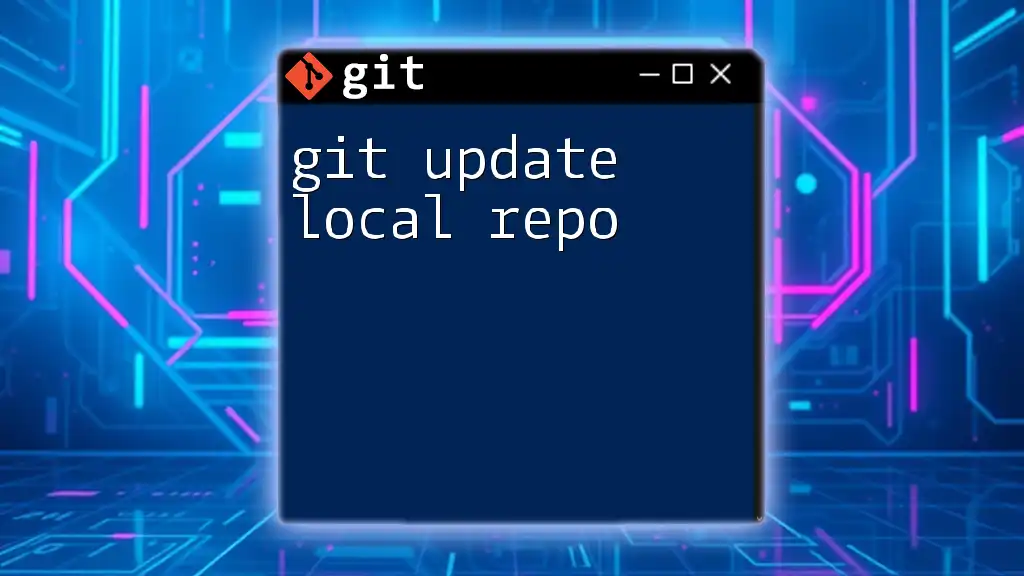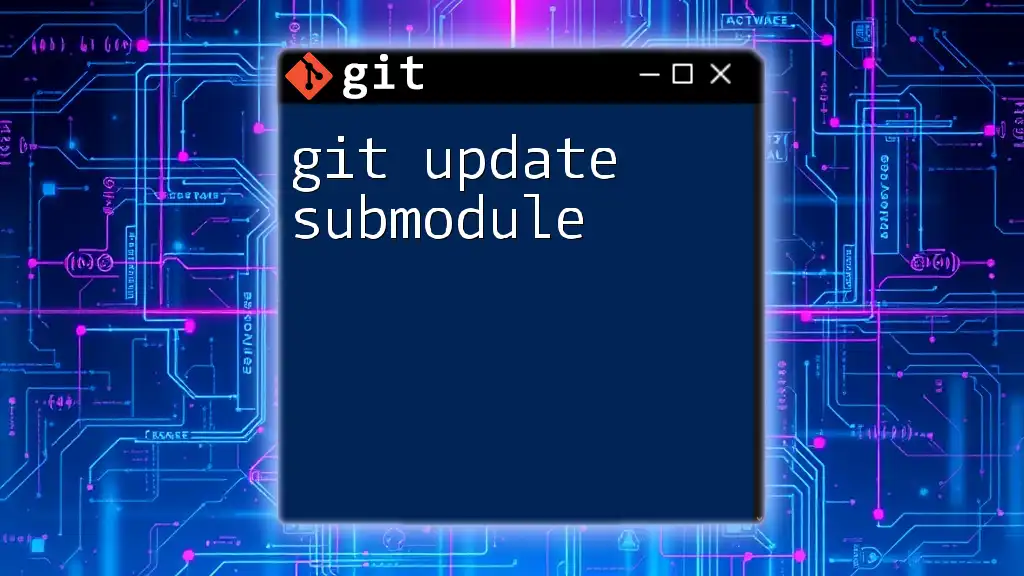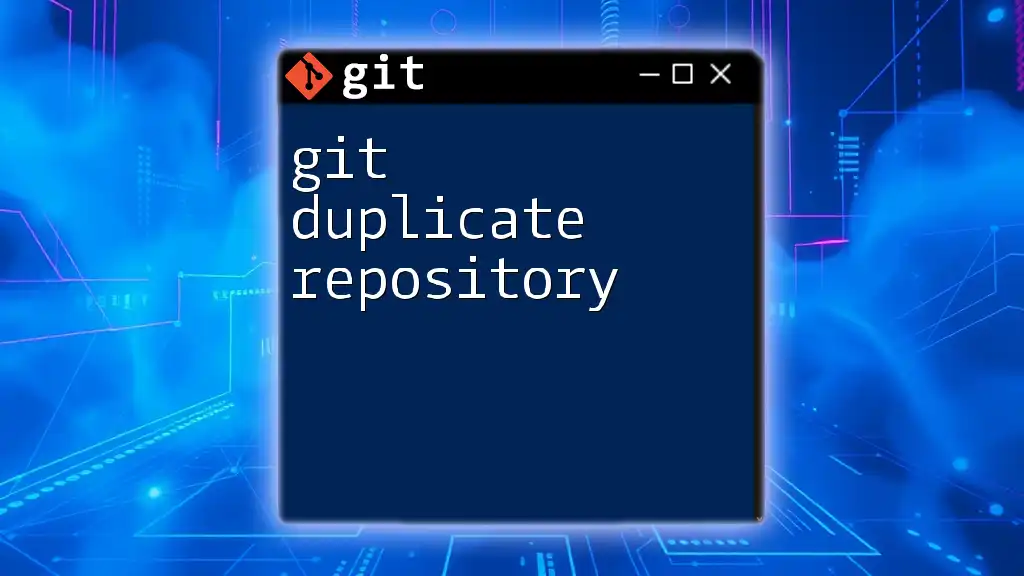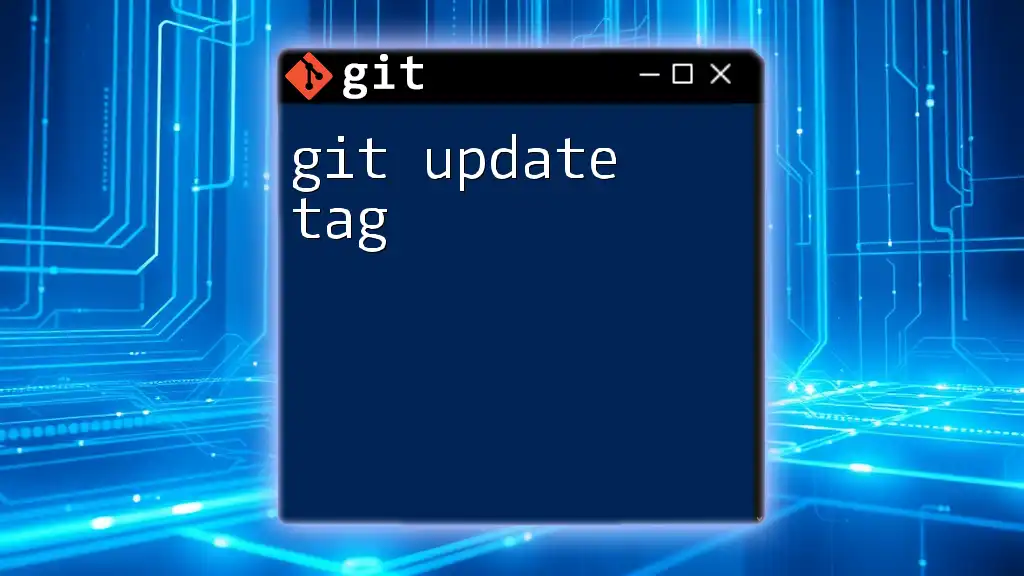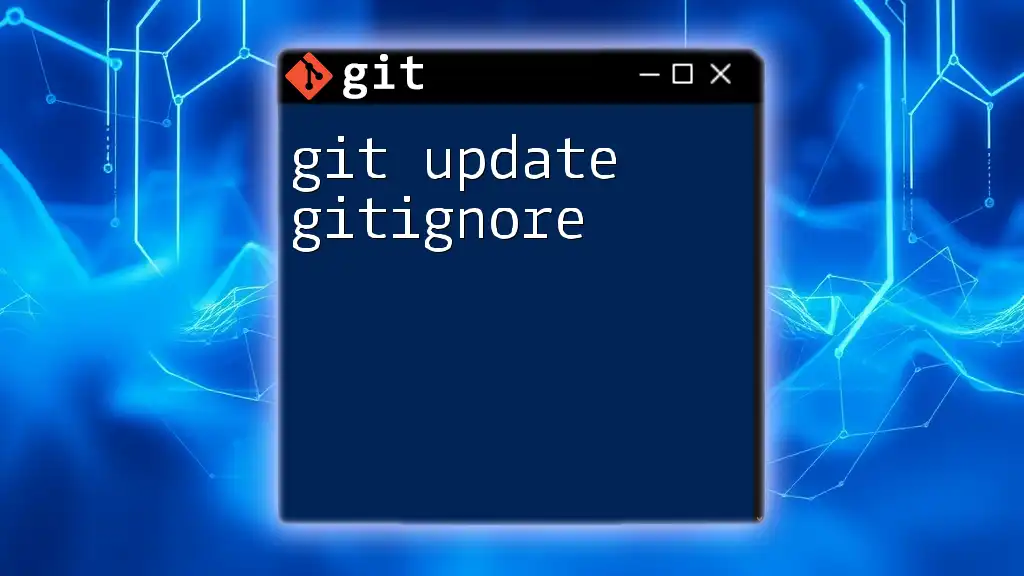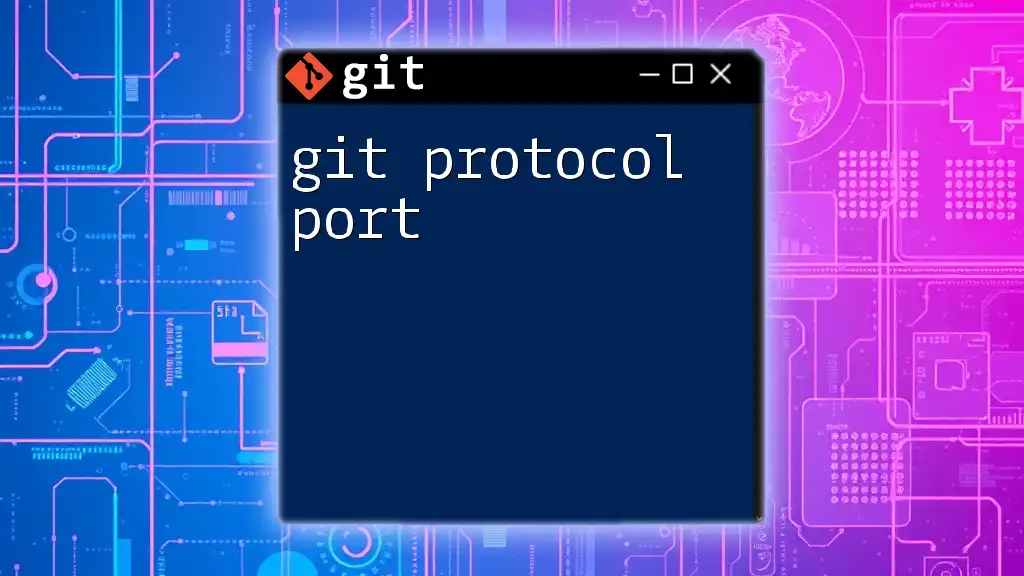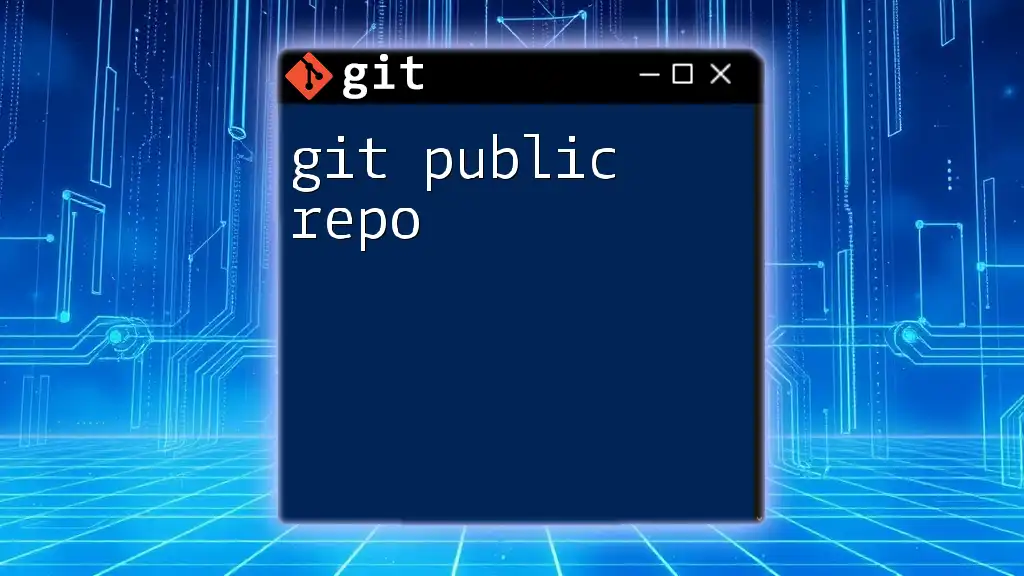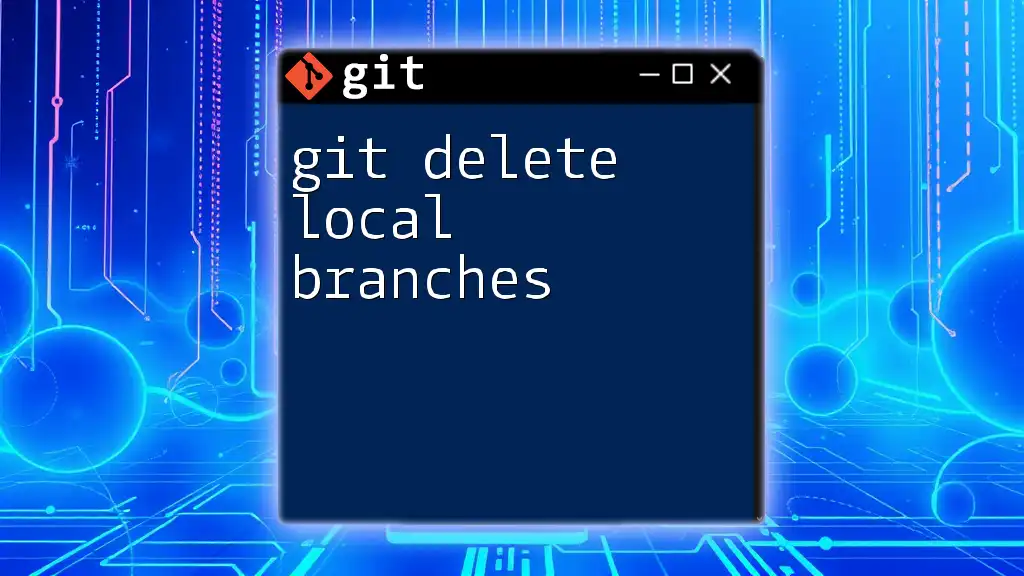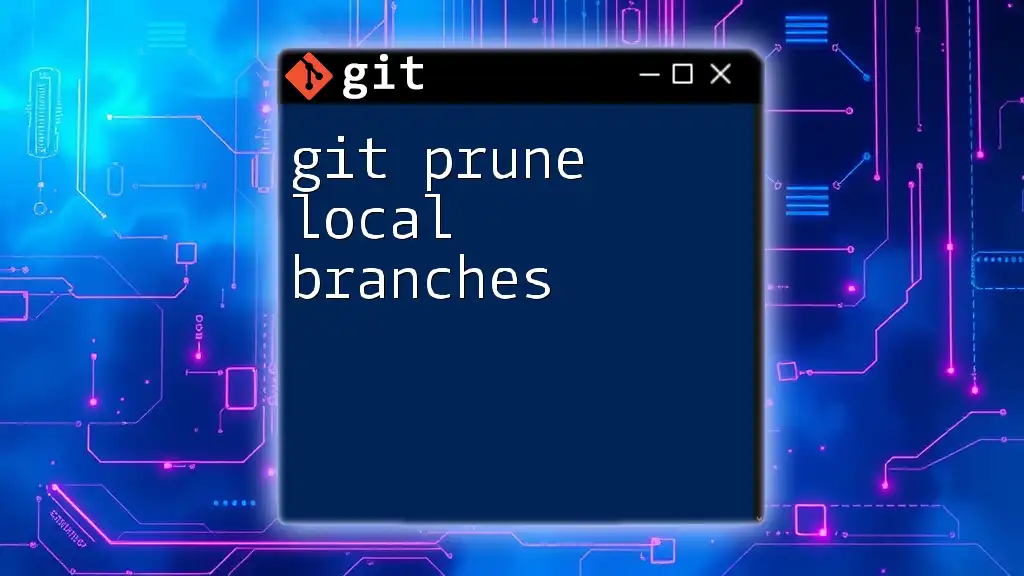To update your local Git repository with the latest changes from the remote repository, use the following command:
git pull origin main
Understanding Git Repositories
What is a Git Repository?
A Git repository is a storage space for your project that contains all the files and the entire version history. In Git, there are two types of repositories: local and remote.
- The local repository is the version of the project on your own machine. It allows you to perform operations without an internet connection.
- The remote repository is hosted on a server (e.g., GitHub, GitLab) and is accessible to others, enabling collaboration.
The distinction between these two types of repositories is fundamental for understanding how to git update local repo, as you'll often be syncing your local changes with the remote counterpart.
Importance of Repositories
Repositories are crucial for collaborative projects. When multiple people work on the same project, it is essential to keep everyone's changes integrated into a single code base. Without proper synchronization, you risk losing valuable work and creating conflicts. Regularly updating your local repository ensures you have the latest version of the project, which includes all developments from your collaborators.

The Basics of Git Commands
Commonly Used Git Commands
Before diving into updating your local repository, it’s important to understand some essential Git commands that will be used frequently. Key commands include:
- `git init`: Initializes a new Git repository.
- `git clone`: Creates a copy of a remote repository on your local machine.
- `git add`: Stages changes you want to commit.
- `git commit`: Saves your staged changes to the local repository.
- `git push`: Sends your committed changes to the remote repository.
These commands provide a foundation upon which you can operate and update your local repos effectively.
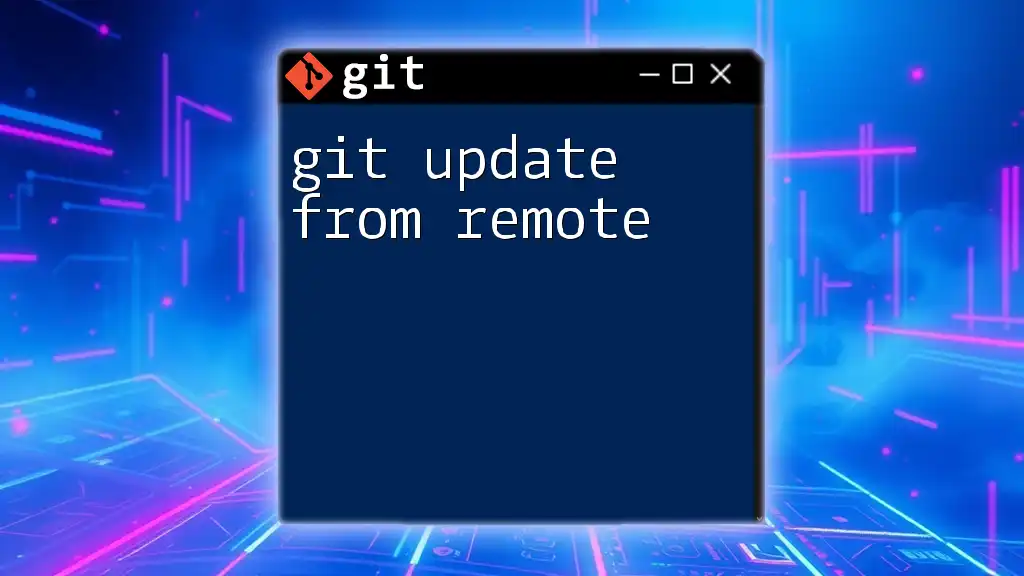
Updating Your Local Repository
Why Update Your Local Repository?
Regularly updating your local repository with remote changes is important for several reasons:
- Incorporating Bug Fixes and New Features: Developers continuously push updates, fixes, and new features. Keeping your local repo current means you benefit from these improvements.
- Avoiding Conflicts: Without regular updates, you may run into conflicts when trying to push your changes later, making collaboration cumbersome.
- Staying Aligned with Team Goals: Keeping your local copy updated ensures that you’re always working from the same code base as your team, promoting seamless collaboration.
The `git fetch` Command
What is `git fetch`?
`git fetch` is a command used to retrieve changes from the remote repository without merging them into your local branch. This means you can see what others have done without altering your own work.
How to Use `git fetch`
To fetch changes, simply run:
git fetch [remote-name]
For example, if the remote name is `origin`, you would use:
git fetch origin
This command will download all the changes made in the remote repository but keep your local branch intact. You can then review these changes without immediately integrating them.
The `git pull` Command
What is `git pull`?
`git pull` combines two operations: it fetches changes from the remote repository and directly merges them into your current branch. This command is generally a quicker way to update your local repository.
How to Use `git pull`
Use the following syntax to pull changes:
git pull [remote-name] [branch-name]
In many cases, you can omit the remote-name and branch-name:
git pull
This command pulls from the default remote and branch associated with your local repository.
For example, pulling changes from the `main` branch of the `origin` remote can be done simply by executing:
git pull origin main
Example Workflow Using `git pull`
Imagine you are working on a team project. You decide to work on a feature and before you start coding, you want to ensure that your local repository is up to date. You would run:
git pull
This ensures you're working with the latest code base, and you can proceed with your development with confidence.
The `git rebase` Command
What is `git rebase`?
`git rebase` is another method to synchronize your local repository with changes from a remote repository. Unlike merging, which creates extra commits, rebasing applies your changes on top of what has already been shared.
When to Use Git Rebase
Rebase is useful when you want to maintain a clean, linear project history. However, be cautious when rebasing shared branches as it rewrites commit history, which can confuse other collaborators.
How to Use `git rebase`
To rebase onto another branch, use:
git rebase [upstream-branch]
For example, if you're on a feature branch and want to rebase onto `main`, run:
git rebase main
This moves your commits on top of what’s in `main`, allowing a seamless integration of changes.
Example of a Rebase Workflow
Imagine you have created a feature branch and want to update it with the latest changes from `main`. After completing your work on the feature branch, you would run:
git checkout feature-branch
git rebase main
This ensures your feature branch now includes the most recent changes, fostering a smoother merging.
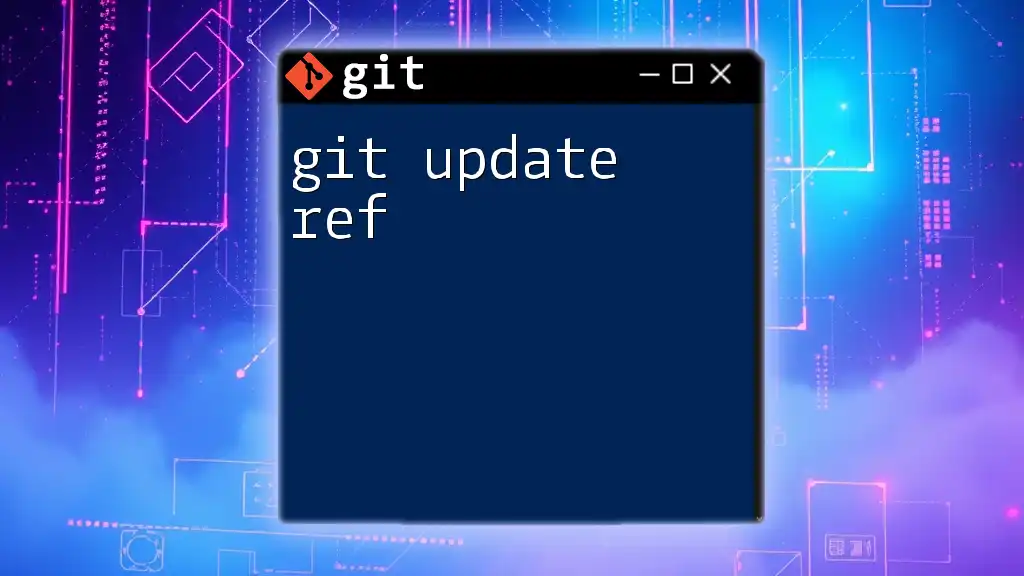
Resolving Conflicts While Updating
What are Merge Conflicts?
Merge conflicts occur when Git cannot automatically resolve differences between two branches. This can happen when two team members edit the same line in a file, leading to confusion for Git on which changes to keep.
Using Git to Resolve Conflicts
Resolving conflicts is an essential skill for maintaining a harmonious codebase.
-
Identifying Conflicts: After trying to merge or pull changes, run:
git statusThis command highlights files that have conflicts.
-
Open the Conflicted Files: Open the files listed by `git status`, and you’ll see sections divided by `<<<<<<<`, `=======`, and `>>>>>>>`, indicating where changes conflict.
-
Resolve the Conflict: Manually edit the file to resolve the conflict. Choose which changes to keep, modify as necessary, and remove the conflict markers.
-
Stage and Commit the Resolved File: Once conflicts have been resolved, stage the file:
git add [filename] -
Complete the Merge: Finally, commit the changes:
git commit
This process allows Git to accurately incorporate changes, ensuring project continuity without losing any contributions.
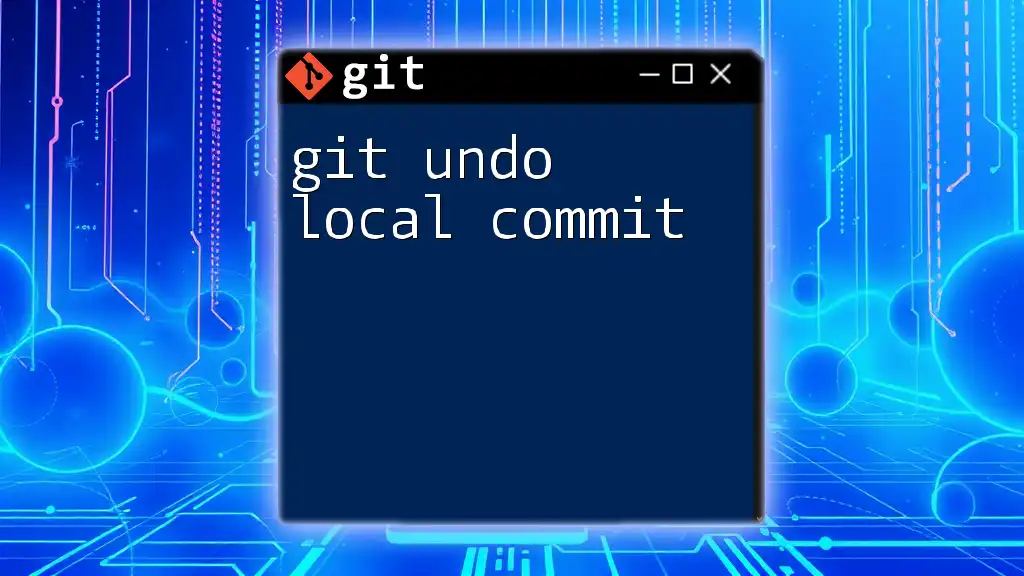
Best Practices for Updating Your Local Repository
Regularly Pulling Changes
To maintain a healthy codebase, it’s advisable to frequently pull changes from your remote repository. Doing this helps you stay aligned with the latest project developments and reduces the likelihood of significant conflicts.
Committing Local Changes Before Updating
Before pulling updates, commit your local changes. This practice minimizes the risk of losing any work and simplifies the update process. Always ensure that your local commits are clean before integrating new changes.
Staying Informed About Remote Changes
Maintaining good communication within the team is vital. Ensure you are aware of what changes have been pushed to the remote repository. Consider employing tools like Slack or project management systems that inform team members of code updates, fostering transparency and collaboration.
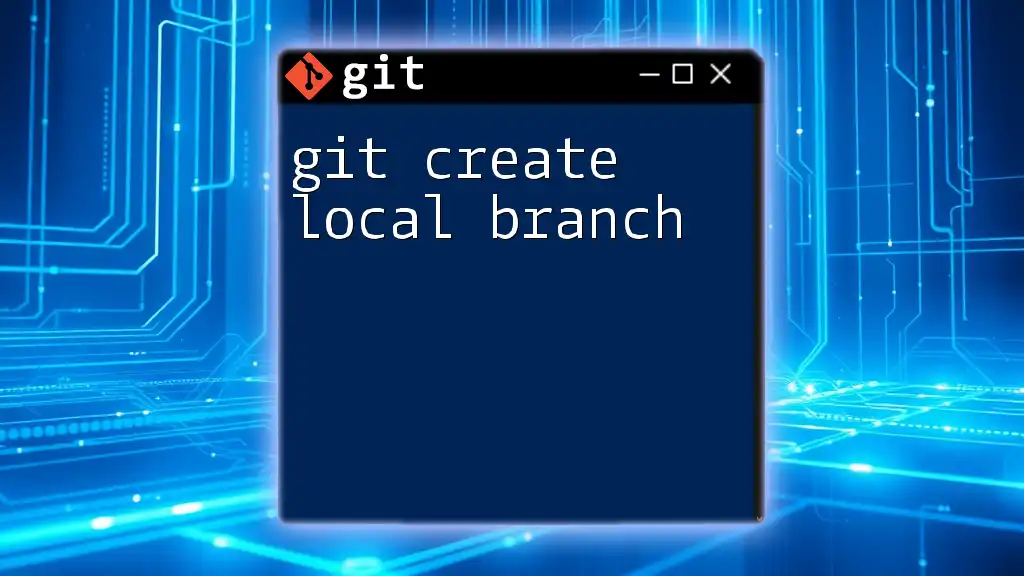
Conclusion
Keeping your local repository updated is crucial for effective collaboration in any project. By using commands like `git fetch`, `git pull`, and `git rebase`, you can streamline the update process while minimizing conflicts and enhancing productivity. Remember to adopt best practices such as regular updating, commiting your work beforehand, and maintaining clear communication among teammates.
Dive into these commands and experiment with them on your own projects to reinforce the concepts covered in this guide. Mastering how to git update local repo will significantly enhance your skills and prepare you for seamless collaboration in software development.

Additional Resources
To further enhance your Git knowledge, explore documentation, tutorials, and tools available online. Websites like Git's official documentation, Codecademy, and freeCodeCamp offer valuable resources tailored to different skill levels. Additionally, hands-on exercises can solidify your understanding and prepare you for real-world applications while utilizing Git for version control.
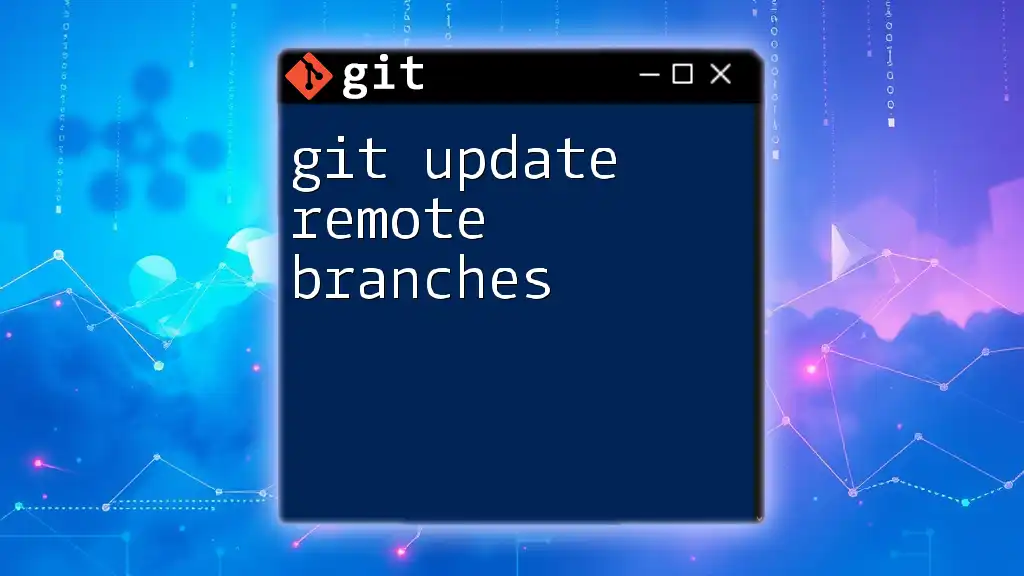
Call to Action
Stay tuned for more Git tips and tricks by subscribing to our blog. We invite you to share your experiences or any questions you may have regarding updating local repositories in the comments section below! Your insights are invaluable to the Git community, and together we can foster a collaborative learning environment.

